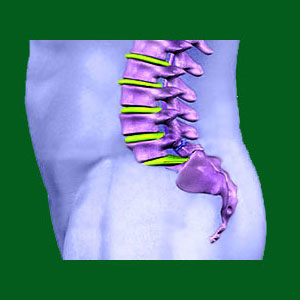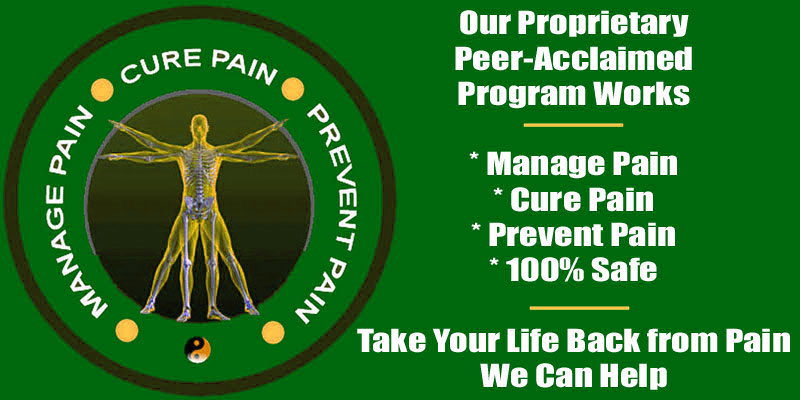
There are only 2 accepted ways to stabilize spondylolisthesis. However, exponents of each method generally criticize the other as being ineffective and even dangerous. Therefore, there remains a great debate between surgical stabilization versus conservative care using exercises.
Spinal stability is one of the most important attributes of the vertebral column. Without stability, the spine can and often will fail when stressed. Since the spine must continually manage and distribute stresses across the entire anatomy, it is just a matter of time before an unstable backbone will create some very dire consequences. However, this being said, there is little evidence that most minor to moderate cases of listhesis undermine the structural stability of the spine at all.
This essay explores the idea of spinal stability in relation to spondylolisthesis. We will investigate when vertebral migration can actually cause an unstable spinal column and which intervention is best suited to correct the issue and return the patient to a state of neurological safety and full physical functionality.
Indications to Stabilize Spondylolisthesis
Spinal stability is a combined result of all the structures in the spine working together to perform their specific tasks. Stability does not result from pure strength, but instead from the ability to flex, bend and mitigate stresses through versatility of movement and ergonomics of design. Unfortunately, virtually all of the tissues of the spine will degenerate; changing with the passage of time and the consequences of life activity. These changes can occasionally undermine the entire stability of the vertebral column.
Spondylolisthesis, regardless of type or mechanism of action that created it, is usually a relatively harmless structural abnormality. Listhesis is known to weaken the spine at the particular area that is affected, but rarely do cases of minor and moderate listhesis of grade 1 or 2 classifications create any type of instability. Grade 3 and 4 conditions are a completely different story, with medical imaging clearly demonstrating that the vertebral column might be compromised in many patients who possess these significant vertebral displacements. For more details, please see our post covering spondylolisthesis grading.
Regardless of whether symptoms are present or not, a spine that has been structurally compromised might be a ticking time bomb. If the patient suffers additional degeneration (they will: this is a given) or injury (they might), the consequences might be catastrophic. Therefore, physicians will usually advise patients who demonstrate marked instability towards pursuing treatment using one of the 2 methods detailed in the following sections below.
Spondylolisthesis Exercise Stabilization
Proponents of conservative care will argue that many cases of spondylolisthesis can be effectively stabilized through the use of physical therapy and special exercise regimens. The idea here is to build the strength of the surrounding musculature in order to stabilize the spine, support the weakened region and prevent the listhesis from worsening to create neurological threat.
Most conservative care for listhesis is recommended for patients with grade 1 and 2 classifications, although some grade 3 conditions are also indicated according to some doctors and therapists. It is rare that a severe grade 3 or grade 4 patients will receive a medical recommendation to use exclusively conservative exercise-based care to stabilize the backbone.
We love the idea of nonsurgical spondylolisthesis treatment and stabilization. However, we can not endorse it universally, since the facts unveil truths that often elude caregivers: In most cases where exercise therapy is utilized, the spine is not unstable. Most of the indicated cases are grade 1 and 2 types of spondylolisthesis that are not pathological or compromising the integrity of the spine. Therefore, although exercise use is well-intentioned and constructive in both theory and application, it is really unnecessary for many patients. We would happily recant this statement if exercise was positively shown to reduce the chance of listhesis progressing to potentially symptomatic degrees, but objective evidence of this occurrence is sadly lacking. We certainly see no harm in using PT or exercise to help increase the strength of the back muscles to support the weakness in the vertebral column, but we must caution symptomatic patients that these methods rarely effectively reduce pain. The reason for this fact is that pain is rarely present from such minor cases of listhesis, so the diagnostic verdict implicating spondylolisthesis as the symptomatic source might be flawed.
Stabilize Spondylolisthesis with Surgery
Surgical spinal stabilization using spondylodesis is the medical standard of care for symptomatic and unstable spondylolisthesis. Spinal fusion can effectively reinforce even the most compromised spine, although this benefit also comes with great negative collateral consequences. Spinal fusion is the most complication-fraught surgery and creates many problems of its own in terms of spinal functionality.
Listhesis can be corrected and neurological function restored when the spine is fused using a combination of bone grafts and surgical hardware to literally forcibly hold the spine in its proper alignment. This is why fusion is the industry standard treatment for symptomatic cases of listhesis and the stabilization of grade 3 and 4 examples of vertebral migration. However, we see plenty of procedures performed on people with perfectly stable grade 1 and 2 listhesis profiles, making fusion one of the most overused surgical treatments in the dorsalgia treatment industry. We have been widely criticizing spinal fusion for its overly frequent incidence of use, its tendency to necessitate additional surgeries, its inherent negative changes to spinal design and its financial motivations, for more than a decade. Therefore, we also do not stand behind fusion as the universal answer to spondylolisthesis.
Patients are strongly encouraged to seek expert diagnostic evaluation and treatment advice from more than one specialist before making up their minds on the best approach to care for their specific needs.
Spondylolisthesis > Spondylolisthesis Relief > Stabilize Spondylolisthesis



